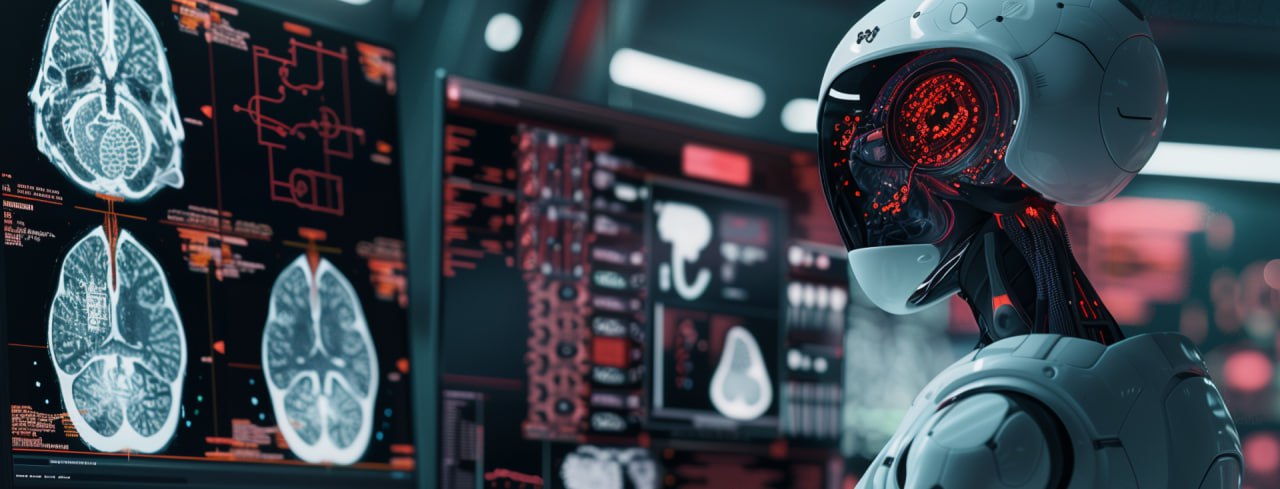If you have already discussed Neuralink’s progress and the ChatGPT malfunction, it’s time to read our new #InfocusAI digest. We’ll tell you about new scientists’ ideas for accelerating computing, MIT’s invention against counterfeiting, a unique box for testing intelligent fire-fighting systems at Tomsk Polytechnic University, and an AI application from HSE for diagnosing dyslexia.
AI-focused digest – News from the AI world
Issue 36, February 8-22, 2024
US engineers have developed a chip that uses light waves for computing
Scientists at the University of Pennsylvania (USA) have developed a new chip that uses light waves to perform the mathematical operations essential for AI training and functioning. The invention has the potential to radically speed up computing with less energy cost, according to Penn Engineering Today. The new chip is based on pioneering research in manipulating materials at the nanoscale for mathematical computations with the use of light. To be precise, instead of a silicon wafer of the same height, the scientists proposed to use a wafer with a height varied by a few nanometres in some regions. These changes in height can be distributed to allow light to scatter through the chip in specific patterns, allowing mathematical operations to be carried out at tremendous speed.
Oxford University figured out how to transfer magnetic whirls onto silicon and speed up computing
Physicists from the University of Oxford have proposed another way to increase the speed of computing, with the help of magnetic whirls. Those whirls can move at speeds of up to several kilometres per second and could be used as perfect information carriers in computing platforms. However, the practical application of them has been hampered until recently as the materials used to produce such magnetic whirls are poorly compatible with silicon, the basis for modern computing systems. Oxford scientists have overcome this limitation. They grew a very thin layer of hematite (the most abundant antiferromagnet) on top of a crystal base covered with a special “sacrificial layer” made from a cement component. This “sacrificial layer” dissolves in water, allowing the hematite membrane to be separated from the crystal base and transferred onto silicon. Using a specially developed technique based on linearly polarised X-rays, the scientists then verified that such free-standing layers of hematite can host powerful magnetic whirls. More information on the Oxford University website.
MIT created a more secured method to combat counterfeiting
Researchers at MIT have invented a new identification tag that will make life much harder for counterfeit manufacturers. This tag is tiny, cheap to produce, and most importantly, it can’t be so easily reattached from genuine goods to counterfeit, or rather, it can be reattached, but that won’t work. The secret is in the glue used to attach the tag to the surface of the object. Microscopic metal particles are mixed into it, forming a unique pattern that is revealed by terahertz waves. If the tag is peeled off and reattached, this pattern will be broken, so that intruders will no longer be able to pass off the fake as genuine. The researchers have also created an ML model to detect such unauthorised tampering, and it works with 99% accuracy. Read more about the invention at MIT News.
A unique experimental box for testing fire systems with AI was opened in Russia
Tomsk Polytechnic University opened a unique experimental box for testing intelligent fire alarm and fire extinguishing systems, including those for nuclear industry sites, the university’s news office reports, highlighting that the new test facility has no equivalents in Russia or in the world. The box is expected to help in accumulating an experimental database for training neural networks capable of detecting abnormal situations at industrial facilities at early stages and preventing accidents. The researchers are planning to collect the necessary volume of training data in two-three years.
HSE AI Research Centre developed an AI app for diagnosing dyslexia
More news from Russia. HSE University’s AI Research Centre has developed an AI application for diagnosing dyslexia in children. According to the HSE website, the new software will be introduced into clinical practice as early as this year. The app called “Dyslector” allows to detect signs of reading disorders much faster than traditional neuropsychological and logopedic methods and to determine the degree of dyslexia in schoolchildren based on video-oculography data, taking into account their gender and age.













